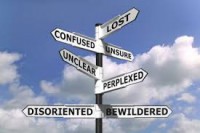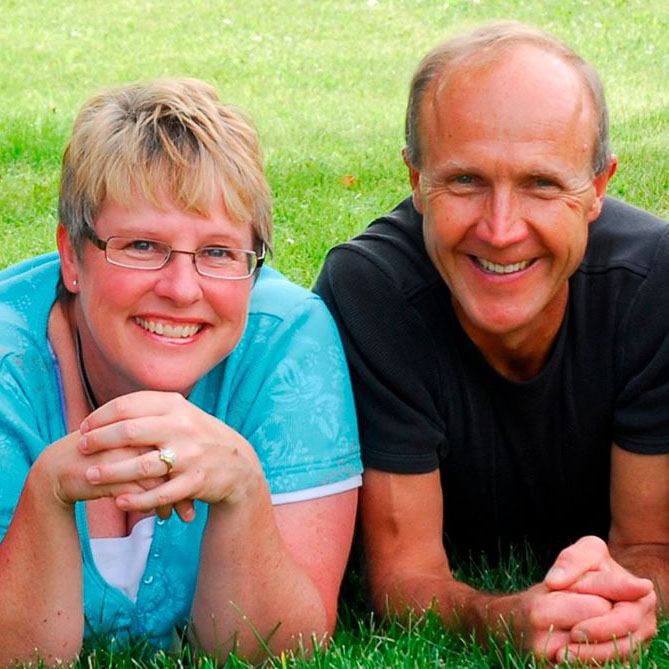Ever had a time when you made a decision that turned out to be a really bad one? And when you reflect back to that decision point, you remember feeling a bit “off” about it?
Example:
Carol and I walked into the lawyer’s office to meet our friend, John (name changed). We had agreed to lend John some money for a housing project. The door opened and in walked a young woman. John jumped to his feet and said, “Perfect timing. Carol and Dan, I’d like you to meet my business partner, Jessica (name also changed).”
Carol and I glanced at each other briefly and then resumed the completion of the paperwork with the lawyer.
As we were walking back to the car, Carol asked “What do you know about Jessica?”
“I don’t know anything about her. I was hoping you knew what was going on.”
“It felt really weird.” Carol said. “But we know John and I’m sure everything will be just fine.”
But it wasn’t fine and we ended up losing a bundle in the deal. A bad decision.
I’ve had many decision-making incidents (personal and business) which have helped me to learn a valuable lesson.
The Lesson: Trust your guts and flip a coin.
Yup. That’s it. But there is more behind it.
Geil Browning, PhD, in her book “Understanding Emergenetics,” describes how scientists have discovered there is a lining of the esophagus, stomach, small intestine, and colon which contains neurons and neurotransmitters which can learn, maintain memory and provide us with valuable information based on stimulus to which we are subjected. This gut-brain often catches seemingly insignificant details which can make a big difference. This gut-brain can and does communicate with the brain, yet can act independently as well.
To tap into both brains, I’ve learned through my own experiences that, when faced with a decision, and not being sure which way to go, I take some time to be quiet and contemplate my choices. I invite you to experiment to see and feel how this works for you.
The set-up:
Find a quiet place, without any distractions such as phone, music, computer, or anything that might break your focus. Personally, I like to find a spot to sit in nature (even in the winter). There are only 3 high-tech tools I take along: paper, a pen, and a coin.
The steps:
Hold out your arms, about shoulder width apart, with palms upward. Imagine you are holding one choice on one hand and one choice on the other hand. You may wish to write each choice in one short sentence on a small piece of paper, and hold the paper in each hand. It may add power to the experience.
Notice what is going on for you. Just breathe deeply and be there for a few moments:
- What do you notice about your body – any sensations?
- Is it leaning one way more than the other?
- Is there a tendency to look toward one hand more than the other?
- Any sensations in your gut toward one or the other?
- What pictures are you seeing in your mind?
- What thoughts or words are going through your mind about these choices?
After a few moments, stop and jot down anything you noticed.
Now focus on one hand and imagine that is the choice you make. In your mind, get right into that hand and that choice, as if it has been made. Breathe deeply and just be there:
- What do you notice in your gut – a feeling of any kind?
- What other sensations do you feel – relaxation, calmness, tenseness, pain, twinges, etc.?
- What thoughts are going through your mind?
- What pictures are you seeing?
- What words are you hearing about that choice?
After a few moments, stop and jot down anything you noticed.
Now focus on the other hand and imagine that is the choice you make. In your mind, get right into that hand and that choice, as if it has been made and go through the same steps as above.
After a few moments, stop and jot down anything you noticed.
In reviewing your notes, you may gain insights, especially when evaluating the thoughts in your mind and the feelings in your gut.
I’ve learned to add one final step to affirm the choice – flip a coin. Ultimately, every choice comes down to yes or no, 1 or 2, right or left.
Assign “heads” to one choice and “tails” to the other.
Get yourself in a calm, clear, and centered place in your mind and body. Close your eyes and flip the coin. Pay very close attention to the feeling in your guts when you open your eyes and see the coin.
How can you stop making bad decisions? More importantly, how can you focus on always making the best decision which gives you the results you want?
Listen to your head, your heart, and your guts and then flip a coin. It works in every situation, whether it be in your professional or personal roles.
I challenge you to experiment with this strategy. And I’m keen to hear how it works for you.


Leave a Reply